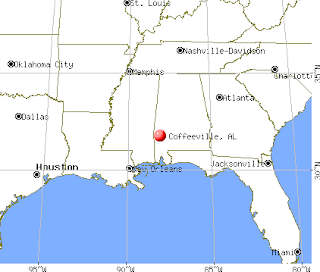(This is a response to an article in the New York Times titled "Digital Age is Slow to Arrive in Rural America." The author was Kim Severson. You can find the article here.)
The introduction of the Internet started a new era in the world. Many people are embracing the digital age. College campuses are an example of how technology has changed the way people function. Students do their homework on laptops, and connect wirelessly anywhere on campus.
What many people do not know is that there is a whole other section of America. There are people that do not own a computer or use an internet connection. Severson said "...Two billion people now use the Internet regularly — the line delineating two Americas has become more broadly drawn. There are those who have reliable, fast access to the Internet, and those, like about half of the 27,867 people here in Clarke County, who do not."
Severson visited Coffeeville, Ala., and rewinded ten years. The rural town is behind on technology. Most citizens do not have broadband internet, and only a few have dial-up. Cellular phone coverage is almost non-exist, and can only be reached in small areas of the county. Broadband service is not only useful but vital. Most companies now have online websites for their customers to pay bills, shop and do taxes. Weather services blast out severe storm warnings via text message and Twitter. Without broadband, these citizens are lacking the daily necessities that make life easier.
Social media is another reason small town citizens would enjoy broadband service. It is difficult to reach someone if there is no cellular phone service and they do not have a Facebook. Most communicating is now done through Facebook, Twitter and blogs. It is hard to e-mail someone to set up an appointment or to apply for a job. Keeping in touch with someone from out of town is nearly impossible.
Because the median household incomes are usually much less than of those who work in large cities, the internet and cellular phone services are out of price range for small town citizens. This dilemma does not apply solely to Coffeeville, but to a lot of rural towns in America. According to Severson, "In rural America, only 60 percent of households use broadband Internet service, according to a report released Thursday by the Department of Commerce. That is 10 percent less than urban households."
Community leaders have been taking measures to speed up their towns' technology process. They have applied for stimulus money, but the process is long and hard. Until big companies see the potential to invest in small towns, the times will not change. Once companies see an increase in the demand for broadband and cellular service, they will hopefully reach out and invest. Until then, rural areas such as Coffeeville, Ala. will be stuck in the past, and waiting for a dial-up connection.
I consider it not only necessary but vital to have an internet connection. As mentioned above, life is made easier by doing things via the computer. Where someone lives should not determine their amount of computer opportunities. As technology continues to change, those citizens will be stuck even further in the past. Companies should step up and make a presence in theres rural areas for the enrichment of those citizens.

My sister lives in just such a rural area. She is so frustrated that no one will offer broadband or a cell tower!
ReplyDelete